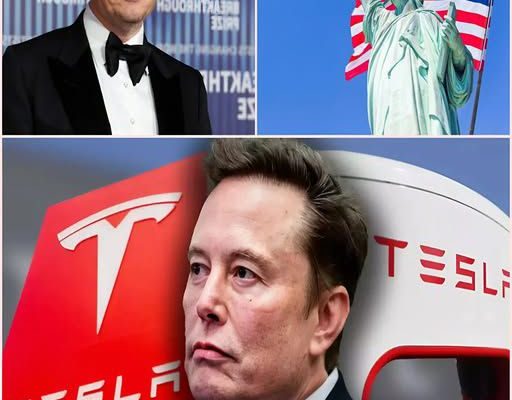Elon Musk has made a seismic shift in strategy, announcing on April 23, 2025, that he will pull back entirely from U.S. government projects to focus on rescuing Tesla from its spiraling financial crisis. The decision comes after Tesla reported a catastrophic 71% profit drop in Q1 2025, with revenues falling 9% to $19.3 billion and vehicle deliveries declining 13% to 336,681 units—the worst quarter since 2022. Musk’s withdrawal from government initiatives, including his role in the Trump administration’s Department of Government Efficiency (DOGE), marks a drastic pivot as he scrambles to save his embattled empire amid mounting losses and a 50% stock plunge since December 2024.
Musk’s involvement in DOGE, where he advocated for sweeping federal spending cuts, had become a lightning rod for controversy. The backlash was severe—protests erupted globally, Tesla dealerships faced vandalism, and sales plummeted, particularly in Europe, where Germany saw a 76% drop. Environmentally conscious EV buyers turned away, associating Tesla with Musk’s political stances, including his support for far-right causes. This consumer revolt allowed Chinese rival BYD to seize the top EV seller spot, with a 75% sales surge in Europe. Tesla’s market valuation has hemorrhaged $700 billion, and analysts like Dan Ives of Wedbush Securities estimate Musk’s political foray cost Tesla 10% of its global customer base.
The billionaire’s retreat from government projects also impacts SpaceX, which has relied heavily on NASA contracts and Department of Defense launches. Musk stated SpaceX will “prioritize commercial missions” moving forward, a move that could strain relations with federal partners but allows him to redirect resources to Tesla. During a tense earnings call, Musk deflected blame for Tesla’s woes, citing economic uncertainty and Trump-era tariffs, though he admitted the latter hurt low-margin sectors. He insisted Tesla’s localized supply chains offer resilience but couldn’t deny the brand damage inflicted by his political ventures.
Musk is now banking on Tesla’s recovery with aggressive promises: affordable models by June 2025 and a driverless robotaxi service by year-end. However, Tesla’s track record of missing Musk’s ambitious deadlines, especially for autonomous driving, fuels skepticism. The Cybertruck’s lackluster reception and an aging EV lineup further complicate the road ahead. On X, fans are divided—@TeslaForever urged Musk to “focus on innovation, not politics,” while @EVTruth warned, “Too late, the damage is done.”
Can Musk save Tesla? His full return to the company signals a do-or-die moment. If he can deliver on his promises and rebuild Tesla’s reputation, the billionaire might reclaim his throne. But with fierce competition from BYD and eroded consumer trust, the clock is ticking. Musk’s empire hangs in the balance, and the next few months will determine if this bold move can halt Tesla’s decline—or if the tech titan’s reign is nearing its end.



